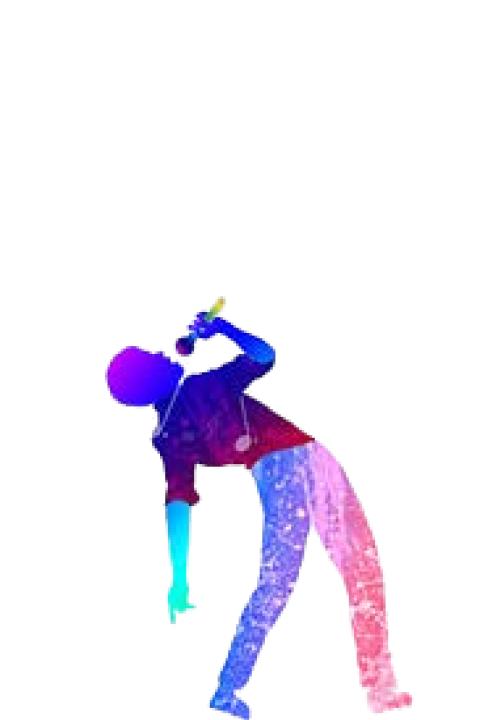The music industry has long been
plagued by the issue of music piracy, a phenomenon that has evolved with
the rise of digital technologies. While technological advancements have
revolutionized the way music is produced, distributed, and consumed, they have
also provided opportunities for the illegal reproduction and distribution of copyrighted music. The
impact of piracy on the industry, artists, and consumers alike is profound, and
it continues to be a major challenge. In this article, we will explore the most
significant challenges of music piracy and the comprehensive measures
that have been implemented to combat this ongoing issue.
The
Evolution of Music Piracy
Piracy has existed for as long as
music has been commercially available, but its methods have changed drastically
over time. Before the advent of the internet, music piracy primarily involved
the unauthorized reproduction of physical media, such as vinyl records,
cassettes, and CDs. However, with the rise of the internet in the late 1990s,
music piracy shifted from physical copying to digital piracy, making it
easier and faster to reproduce and distribute music without authorization.
The introduction of peer-to-peer
(P2P) file-sharing platforms such as Napster, LimeWire, and BitTorrent
enabled users to easily share music files online, often without compensating
the original creators. This marked a significant turning point in the music
industry, as piracy now had a global reach, with millions of users worldwide
participating in the illegal distribution of music.
The
Financial Impact of Music Piracy
One of the most significant
challenges that the music industry faces due to piracy is its financial
impact. Music piracy results in billions of dollars in losses annually,
affecting not only large record labels but also independent artists, producers,
and songwriters. These losses are attributed to the decline in revenue from
legitimate sales, as consumers opt to download music for free rather than
purchase it legally.
The financial impact extends beyond
just lost sales. The costs associated with combating piracy, including legal
fees, lobbying efforts, and the development of anti-piracy technologies, are
substantial. Furthermore, piracy undermines the ability of artists to sustain
their careers. For emerging artists, particularly those without the backing of
major labels, piracy can severely limit their opportunities to monetize their
work and gain recognition.
The
Ethical Dilemma of Music Piracy
Beyond the financial implications,
there is an ethical challenge associated with music piracy. Many consumers may
not fully understand or acknowledge the ethical concerns surrounding the
illegal downloading and sharing of music. Some justify piracy as a form of
protest against large record labels or high prices for music. Others view it as
harmless, believing that artists, especially successful ones, do not need the
extra income.
However, this mentality disregards
the fact that a wide network of individuals—ranging from producers and sound
engineers to marketers and venue operators—relies on the music industry for
their livelihoods. Piracy deprives not only the musicians but also the entire
ecosystem that supports music production and distribution of their fair
compensation.
Technological
Measures to Combat Music Piracy
In response to the growing problem
of music piracy, a range of technological measures have been developed
to protect copyrighted music from illegal distribution. These measures include:
Digital
Rights Management (DRM)
Digital
Rights Management systems are designed to prevent
unauthorized access, copying, and distribution of digital content. DRM
technologies encrypt music files, allowing only authorized users to access
them. While DRM was initially hailed as a solution to piracy, it has not been
without controversy. Critics argue that DRM can be restrictive, limiting the
legitimate use of purchased content, and can be bypassed by determined pirates.
Watermarking
and Fingerprinting
Watermarking and fingerprinting
technologies are used to trace the source of pirated content and detect
unauthorized copies. Watermarking involves embedding a unique identifier into a
music file, which can be used to track where the file originated. Fingerprinting,
on the other hand, creates a unique digital signature based on the content
itself, making it easier to identify pirated material even if the file has been
altered.
Anti-Piracy
Software and Tools
Various anti-piracy software tools
are available to help copyright holders monitor and take action against illegal
downloads and streams of their music. These tools work by scanning the internet
for infringing content and issuing takedown notices to websites and platforms
hosting pirated material. Some tools also monitor P2P networks and other online
platforms to prevent the distribution of copyrighted music.
Legal
and Regulatory Measures
In addition to technological
solutions, legal and regulatory measures play a vital role in combating
music piracy. Governments and industry bodies have implemented a range of laws
and regulations aimed at reducing piracy and protecting intellectual property
rights.
Copyright
Law Enforcement
Enforcing copyright laws is a
fundamental component of the fight against music piracy. Copyright infringement
is illegal in most countries, and offenders can face significant fines or even
imprisonment. Laws such as the Digital Millennium Copyright Act (DMCA)
in the United States give copyright holders the legal means to request the removal
of infringing content from websites and to pursue legal action against
individuals and organizations involved in piracy.
International
Treaties and Agreements
Since music piracy is a global
issue, international cooperation is essential to address it. Treaties such as
the World Intellectual Property Organization (WIPO) Copyright Treaty and
agreements like the Anti-Counterfeiting Trade Agreement (ACTA) provide
frameworks for countries to collaborate in protecting intellectual property
rights and cracking down on piracy.
Public
Awareness Campaigns
Raising awareness among the public
about the impact of piracy on the music industry is another strategy employed
to reduce piracy rates. Public awareness campaigns often focus on
educating consumers about the consequences of piracy and encouraging them to
support artists by purchasing music legally. These campaigns highlight the
negative effects of piracy on both the music industry and the economy as a
whole.
The
Role of Streaming Services in Reducing Piracy
The rise of music streaming
services, such as Spotify,
Apple Music, and Tidal, has played a significant role in reducing music piracy.
These platforms provide consumers with affordable, legal access to a vast
library of music, making piracy less attractive. By offering convenient and
high-quality music experiences, streaming services have shifted consumer
behavior away from illegal downloading toward legal alternatives.
However, while streaming has
contributed to a decline in piracy, it has also introduced new challenges.
Artists often criticize streaming platforms for offering low royalty rates,
which can make it difficult for musicians, especially independent ones, to generate
sufficient income from their work.
Future
Challenges and the Way Forward
Despite the progress made in
combating music piracy, challenges remain. Technological advancements
continue to present new opportunities for pirates, with encrypted P2P networks,
private file-sharing sites, and streaming piracy becoming more prevalent. The
music industry must continue to innovate and adapt its anti-piracy strategies
to address these evolving threats.
In conclusion, music piracy
is a complex issue that affects all stakeholders in the music industry. While
significant measures have been taken to combat piracy through technology, legal
enforcement, and public education, it is an ongoing battle. The future of the
industry depends on continued efforts to protect intellectual property rights
and support artists in a rapidly changing digital setting.












